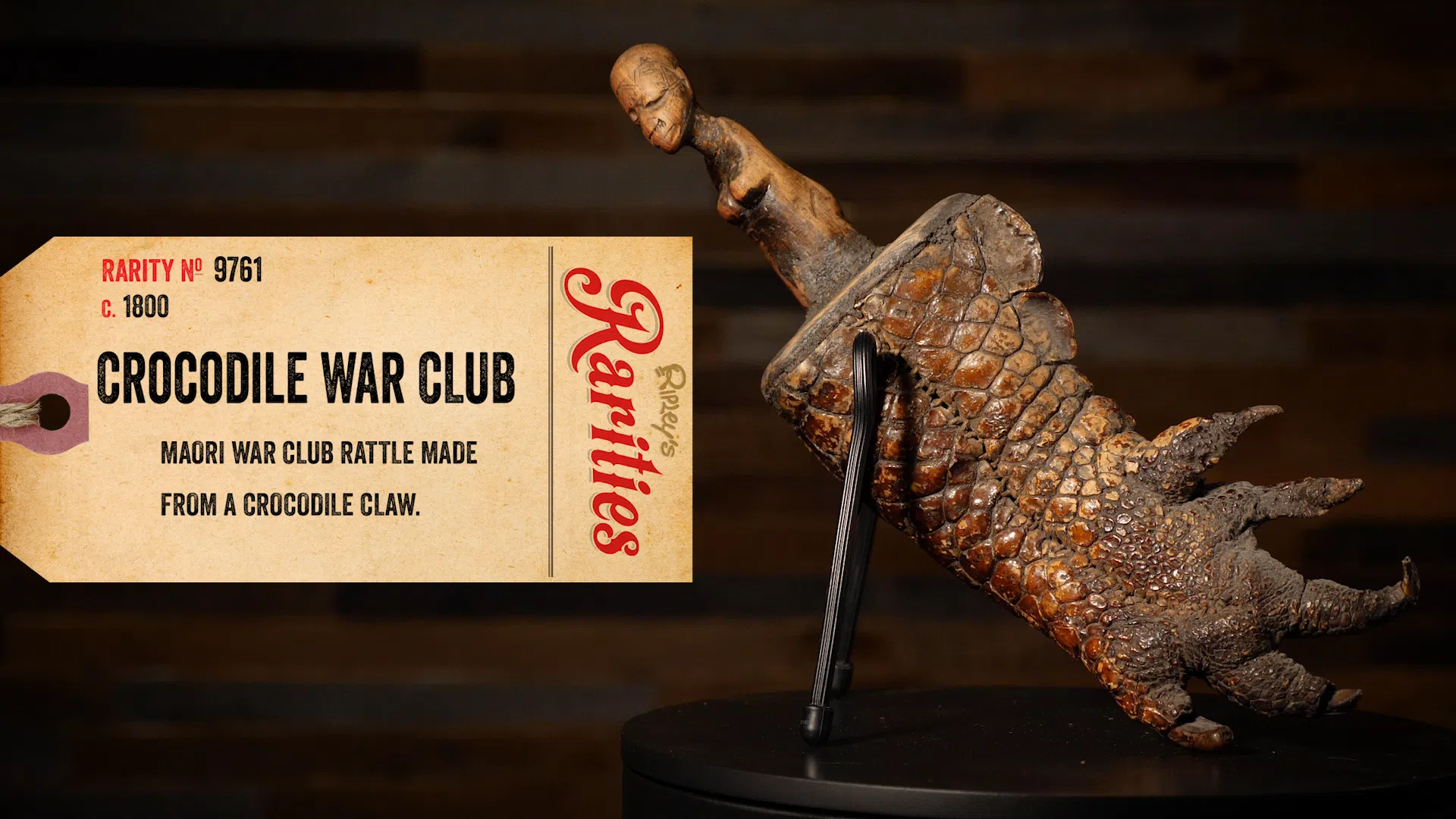The Crocodile Claw War Club Was A Fearsome Weapon
Featured in Ripley's Believe It or Not!

The Maori people of New Zealand migrated into the region from Polynesia in the 13th and 14th centuries. Canoes brought travelers and their customs to a new land. One tradition involved the taniwha, mythical sea creatures that followed in the forms of sharks and fish behind their boats. Each tribe was said to be held accountable by a taniwha. In some cases, the creatures acted as guardians, but in others, they could be malevolent deities.
As the Maori migration brought them closer to the continent of Australia, the mythology surrounding taniwha morphed. Maori people became familiar with caves and freshwater ponds. They also became familiar with the saltwater crocodile. While their neighbors to the west in Papua New Guinea had built an entire founding mythology on the crocodile, the Maori adapted them into their existing traditions.




